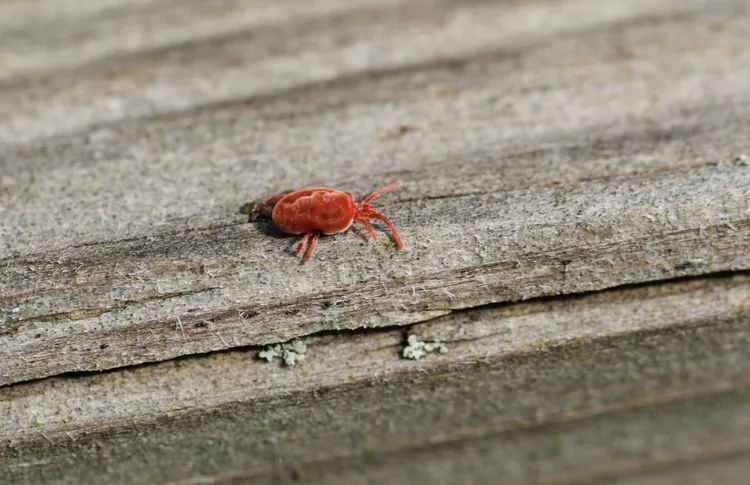Measuring only 1/30 of an inch long, one clover mite is easy to miss, but when they gather in numbers, this common household pest quickly goes from harmless to annoying. This bug can be a pain to get rid of because squishing it leaves a red stain behind. Here’s how experts recommend dealing with clover mites and preventing them from getting into your home.
- Kelly Salas is co-founder of Sierra Vista Maintenance in the Sacramento area.
- Eliana Coca is the owner and co-founder of E.C. House Cleaning in Massachusetts.
What Are Clover Mites?
Clover mites are common in North America. They are part of the spider mite family and have eight legs. Adult clover mites are reddish-brown, while the younger ones and eggs are bright red. Clover mites differ from similar bugs like chiggers or bed bugs because they don’t bite or sting humans.
“To identify clover mites, look for their bright red, oval-shaped bodies, about the size of a pinhead,” says Kelly Salas, co-founder of Sierra Vista Maintenance.
“While harmless, their sheer numbers can overwhelm,” says Eliana Coca, owner of E.C. House Cleaning. These arachnids (technically not insects) are considered a nuisance because of the difficult-to-remove stains they leave behind. Outdoors, they feed on plant sap, which can lead to spotty discoloration on leaves.
What Attracts Clover Mites?
Clover mites are primarily attracted by warmth and food sources. They are most active in the early spring or fall and might try to sneak indoors during cool temperatures to stay warm. However, clover mites also enjoy sunlight and warmth along the side of homes in the summertime, so there might be higher instances of outdoor infestation during the summer.
Clover mites are drawn to the moisture found in gardens. “What attracts them are overgrown lawns, mulch beds, and vegetation surrounding homes,” says Salas. Otherwise, they sneak in through open doors and windows in the summer heat. “They enter through cracks and crevices, migrating indoors where food sources like spiders, dust, and carpet fibers abound,” Coca says.
How to Get Rid of Clover Mites
There are a few simple ways to get rid of clover mites inside your home using natural and store-bought chemical remedies. “The key is repeated treatments to isolate the source; then customize prevention plans to discourage future invasions,” Salas suggests.
- Vacuum the clover mites (and vacuum frequently) from windowsills, corners, cracks, or door entrances to remove them physically. Be sure to empty the vacuum filter so the clover mites don’t return.
- “Scrub stained areas indoors and set out sticky traps to control populations,” Salas adds. Remember, don’t squash clover mites. The red streak left behind can stain.
- Use chemical remedies like insecticidal soap or neem oil, and repeat the treatment if you’re dealing with a heavy infestation. Coca agrees that clover mites are difficult to eliminate in one treatment.
- Spread diatomaceous earth along the outside of the home or in high-concentration areas indoors. This effective natural solution dehydrates clover mites, getting through their exoskeleton and killing them within a few days, but it can be harmful to pets and people if the dust is inhaled, so follow the safety instructions on the product label carefully.
- Apply insecticidal soap directly to the affected plants or apply horticultural oils when dealing with a heavy infestation of clover mites.
- Be wary of overwatering your garden because clover mites love moisture.
For severe clover mite infestations, consult a professional pest control service to assist in solving the problem.
Ways to Prevent Clover Mites
The most effective method of controlling clover mites is to prevent them from entering your home in the first place. “Clover mites may be difficult to eliminate completely, but with the proper strategies, they can be managed for good,” Salas says. Use these tips to prevent a clover mite infestation:
- Vacuum regularly and proactively check around the home for signs of clover mites to prevent infestations.
- Stay on top of your garden by trimming vegetation away from a home’s foundation and not overwatering plants.
- Control and reduce moisture that could attract clover mites.
- Seal cracks and crevices inside or outside the home where clover mites could enter.
- Use safe barrier treatments around the home, such as adding gravel around the perimeter and placing any appropriate pesticides in strategic locations.




















